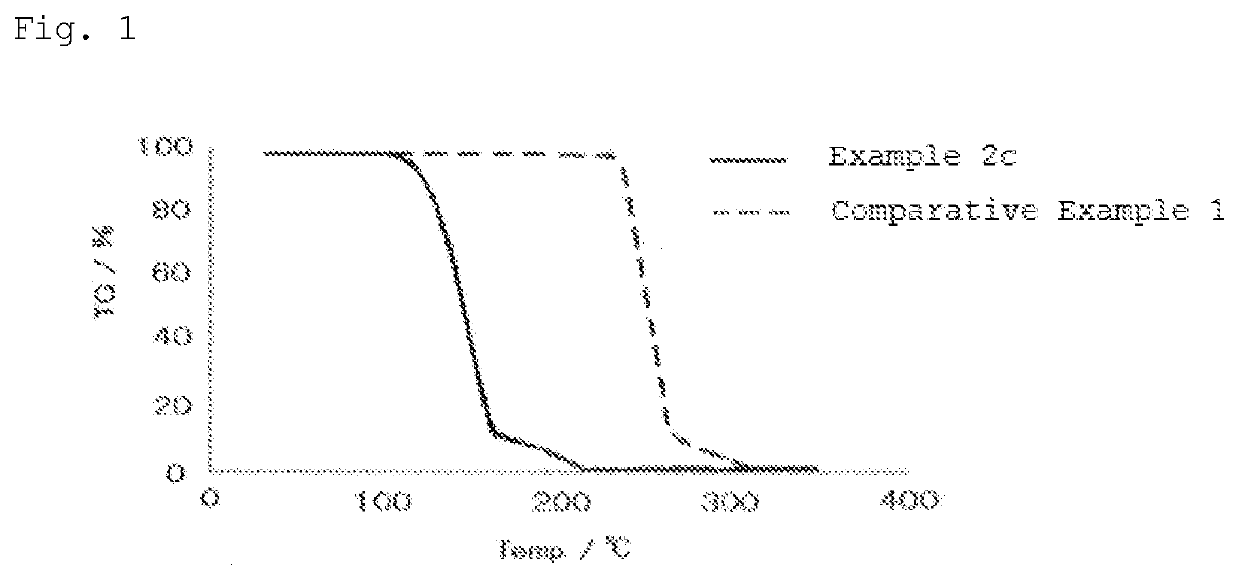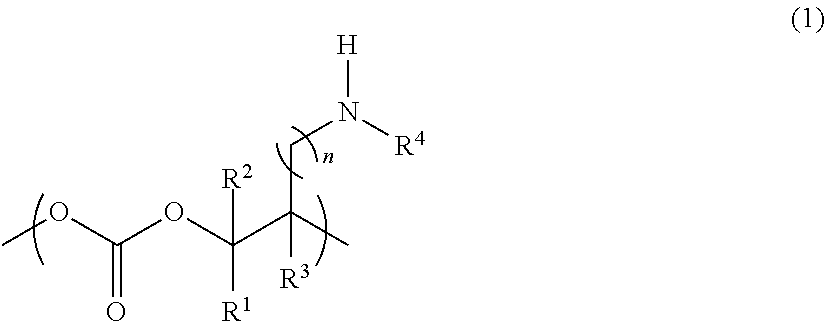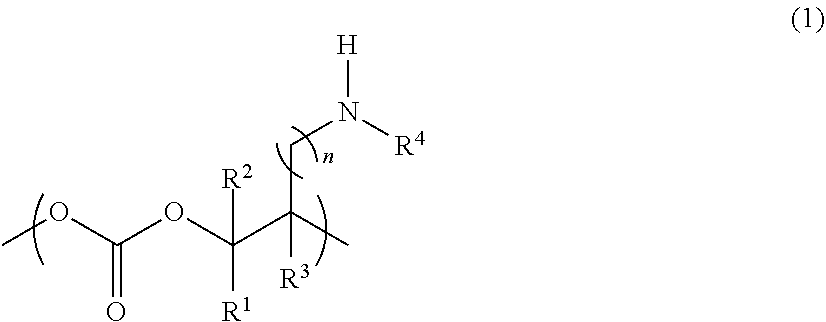Novel aliphatic polycarbonate
a polycarbonate and aliphatic technology, applied in the field of aliphatic polycarbonate, can solve the problems of large residual carbon and adversely affect the performance of products, and achieve the effect of reducing heat energy
- Summary
- Abstract
- Description
- Claims
- Application Information
AI Technical Summary
Benefits of technology
Problems solved by technology
Method used
Image
Examples
production example 1
Complex Catalyst
[0126]A 100-mL eggplant flask equipped with a stirrer and a gas inlet tube was charged with 0.30 g (8.3 mmol) of N,N′-bis(3,5-di-tert-butylsalicylidene)-1,2-cyclohexanediaminocobalt (produced by Aldrich), 0.10 g (8.5 mmol) of pentafluorobenzoic acid, and 13.3 g of dichloromethane; and the contents were stirred for 19 hours while introducing air thereinto. The volatile component was distilled off under reduced pressure, thus obtaining a cobalt complex represented by the above formula (4-3) as a brown solid (yield amount: 0.35 g, yield rate: 88%).
production example 2a
ry Amino Group-Containing Epoxide Protected by a Benzyl Group
[0127]
[0128]A 50-mL Schlenk flask containing a magnetic stirring bar was charged with 865 mg (6.3 mmol) of potassium carbonate. Then, after the internal system was replaced with an argon atmosphere, the system was charged with 9.4 g of N,N-dimethylformamide (DMF), 0.72 g (5.3 mmol) of N-benzyl-N-ethylamine, and 8.5 g (62 mmol) of epibromohydrin. After the resulting mixture was stirred at ordinary temperature for 48 hours, and extracted 3 times with 13.3 g of dichloromethane, the combined organic layers were washed twice with 30 g of saturated brine, and once with ion exchanged water. The organic layers were concentrated under reduced pressure, and the obtained residue was purified by silica gel column chromatography (n-hexane / ethyl acetate=4 / 1 (v / v), Rf=0.53) to give a colorless oily N-benzyl-N-oxiranylmethyl-N-ethylamine (yield amount: 0.93 g, yield rate: 91%).
[0129]The structure of the obtained compound was identified by...
production example 2b
[0131]The operation was carried out in the same manner as in Production Example 2a, except that N-benzyl-N-isopropylamine was used as amine, to give colorless oily N-benzyl-N-oxiranylmethyl-N-isopropylamine (yield amount: 1.00 g, yield rate: 92%).
[0132]The structure of the obtained compound was identified by 1H-NMR.
[0133]1H-NMR (CDCl3) δ=7.30-7.20 (m, 5H), 3.66 (s, 2H), 2.96 (m, 1H), 2.77 (m, 1H), 2.65-2.61 (m, 2H), 2.40-2.35 (m, 2H), 1.05 (d, 6H) ppm.
PUM
| Property | Measurement | Unit |
|---|---|---|
| decomposition temperature | aaaaa | aaaaa |
| decomposition temperature | aaaaa | aaaaa |
| temperature | aaaaa | aaaaa |
Abstract
Description
Claims
Application Information
 Login to View More
Login to View More - R&D
- Intellectual Property
- Life Sciences
- Materials
- Tech Scout
- Unparalleled Data Quality
- Higher Quality Content
- 60% Fewer Hallucinations
Browse by: Latest US Patents, China's latest patents, Technical Efficacy Thesaurus, Application Domain, Technology Topic, Popular Technical Reports.
© 2025 PatSnap. All rights reserved.Legal|Privacy policy|Modern Slavery Act Transparency Statement|Sitemap|About US| Contact US: help@patsnap.com



